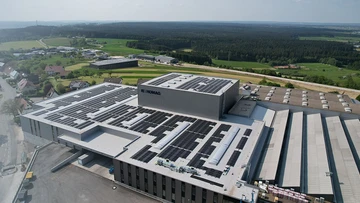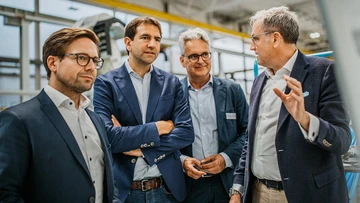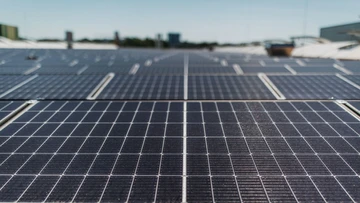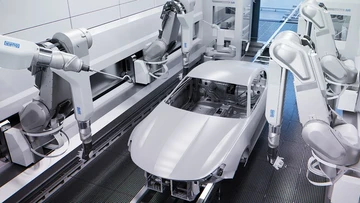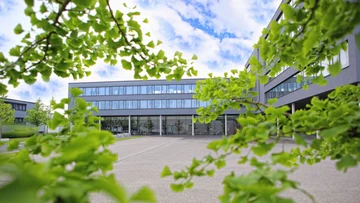In 2022, implementing its climate strategy was at the center of the company’s sustainability activities. The Dürr Group aims to reduce its emissions from operations (Scope 1 and Scope 2) by at least 70% by 2030 compared to the 2019 base-year level. Thanks to investments of over €22 million in sustainable buildings, energy-efficiency measures, and self-generation of electricity, the company has already managed to reduce its climate footprint substantially. Its Scope 1 and Scope 2 emissions dropped to 27,762 tons of CO2e (CO2 equivalents), a reduction of 43% year-on-year and 51% compared to 2019. The increased share of renewables in the energy mix also contributed to the improvement: It rose from just under 9% in the previous year to almost 70%. This was achieved mainly by commissioning photovoltaic systems and switching to green electricity at numerous sites.
Customers increasingly focus on sustainability
Dr. Jochen Weyrauch, CEO of Dürr AG, says: “We take our responsibility for the climate seriously. Our aim is to contribute to sustainability both in our own business and in our customers’. When purchasing machines and systems, customers are increasingly focusing on sustainability criteria in order to make their production processes more climate-friendly. We support them in this through energy-efficient technologies and systems that can be operated using green electricity instead of natural gas.” In addition, the willingness of customers to invest in low-emission technologies is an important requirement for lowering greenhouse gas emissions in the upstream and downstream value chain (Scope 3). These emissions are to drop by at least 15% by 2030 (compared to 2019).
Framework for sustainable financing instruments published
Furthermore, the Dürr Group has strengthened its sustainable corporate financing through a Sustainable Finance Framework. This sets out that sustainable financing instruments such as green bonds or Schuldschein loans may only be used for investments in sustainable product innovations and climate-friendly projects according to the EU Taxonomy. The taxonomy is aimed at promoting investments in environmentally sustainable technologies and obliges companies to publish taxonomy-aligned sales revenues as well as capital and operating expenditures. In 2022, 16.8% of the Dürr Group’s sales revenues were taxonomy-aligned. These include revenues from machines and systems for timber house construction, battery production, and solar technology.
Implementation of the German Supply Chain Due Diligence Act
The sustainability report also describes how the company implements the requirements of the German Supply Chain Due Diligence Act. Among other things, it has appointed a human rights officer, expanded its risk management system, and reinforced its measures to prevent human rights violations in the supply chain.
Through this report, the Dürr Group has further enhanced its sustainability reporting. In doing so, the company is preparing for the substantially increased disclosure requirements under the Corporate Sustainability Reporting Directive (CSRD). This EU Directive on sustainability reporting will be applicable from 2024. The → 2022 sustainability report was prepared in accordance with the Sustainability Reporting Standards of the Global Reporting Initiative (GRI). The GRI reporting standards are widely used around the world and are the prevalent framework in Europe in particular.







